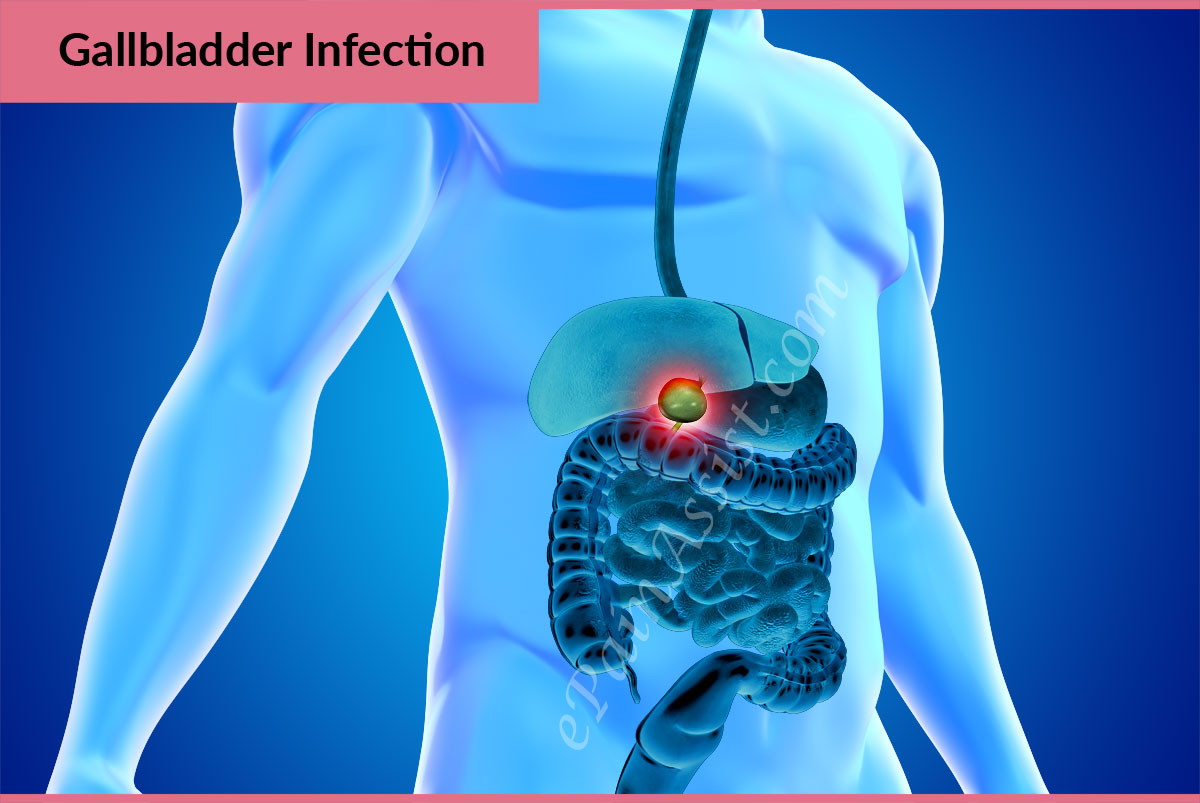What is Cholecystitis or Gallbladder Infection?
Cholecystitis is a medical condition where there is inflammation of the gallbladder. The gallbladder is a small, pear-shaped organ located just beneath the liver, on the right side of the abdomen. The function of the gallbladder is storage of bile, which is a digestive fluid produced by the liver and which is released into the small intestine. In majority of the cases, the cause of cholecystitis is gallstones, which block the cystic tube which exits the gallbladder. This leads to accumulation of bile and results in inflammation. Tumors and problems with the bile duct are other causes of cholecystitis. If cholecystitis is left untreated, it can lead to serious complications, such as enlargement of the gallbladder or rupturing of the gallbladder. Treatment comprises of a hospital stay and often eventually needs surgical removal of the gallbladder.
Causes and Risk Factors of Cholecystitis or Gallbladder Infection
Cholecystitis or Gallbladder Infection is inflammation of the gallbladder.
Causes of Cholecystitis or Gallbladder Infection Include:
- Gallstones are the common cause of cholecystitis. They block the cystic duct and cause the bile to build up which results in inflammation of the gallbladder.
- A tumor may also prevent proper drainage of the bile from the gallbladder leading to accumulation of the bile and resulting in cholecystitis.
- Blockage of the bile duct due to kinking or scarring of the bile duct also leads to cholecystitis.
Risk Factors of Cholecystitis or Gallbladder Infection:
- Gallstones highly increase the risk of developing cholecystitis.
- Women are at a higher risk of developing gallstones than men, thus making them more prone to developing cholecystitis.
- Increasing age increases the risk of gallstones, thus increasing the risk of cholecystitis.
- Enlarged gallbladder.
- Infection within the gallbladder.
- Death (gangrene) of gallbladder tissue.
- Torn (perforated) gallbladder.
Signs and Symptoms of Cholecystitis or Gallbladder Infection
Signs and symptoms of Cholecystitis or Gallbladder Infection often occur after a meal, especially after eating a large meal or a high fat meal.
- Constant, acute pain in the upper right region of the abdomen.
- Radiating pain from the abdomen to the right shoulder or back.
- Tenderness to touch over the abdomen.
- Sweating.
- Nausea.
- Vomiting.
- Fever.
- Chills.
- Abdominal bloating.
- Serious Symptoms Include: Severe abdominal pain where the patient is unable to sit still or find a comfortable position.
Tests to Diagnose Cholecystitis or Gallbladder Infection
- Blood tests to assess for signs of an infection or gallbladder problems.
- Imaging tests, such as abdominal ultrasound or a computerized tomography (CT) scan.
- HIDA (hepatobiliary iminodiacetic acid) scan.
Treatment for Cholecystitis or Gallbladder Infection
Treatment for Cholecystitis or Gallbladder Infection often involves hospitalization to control the inflammation in the gallbladder. Once the cholecystitis is under control, the doctor may recommend surgery for removing the gallbladder, as cholecystitis can recur frequently. In case of rupture of the gallbladder, emergency surgery may be required.
- After the patient is hospitalized, patient is not allowed to eat or drink so as to take the load off the inflamed gallbladder. In order to prevent dehydration, the patient is given I.V. fluids.
- Antibiotics are given if the cause of cholecystitis is an infection or if there is an infection in the gallbladder.
- Pain medications may be given to relieve pain until the inflammation has subsided.
- Symptoms usually start to improve within a day or two after hospitalization.
- Surgery: As cholecystitis recurs frequently, the patients eventually require cholecystectomy which is gallbladder removal surgery. Cholecystectomy is commonly performed laparoscopically (laparoscopic cholecystectomy). Once the gallbladder is removed, the bile, instead of getting stored in the gallbladder, flows directly from the liver into the small intestine. One doesn’t need a gallbladder to live and its removal doesn’t affect the ability to digest food; however, it may sometimes cause diarrhea, but this is usually temporary.
Prevention of Cholecystitis or Gallbladder Infection
The risk of Cholecystitis or Gallbladder Infection can be reduced by preventing gallstones which can be done by:
- Avoiding the rapid weight loss and losing weight slowly.
- Always maintaining a healthy weight.
- Eating a healthy and balanced diet.
- Cleveland Clinic. Cholecystitis (Gallbladder Inflammation). Retrieved from: https://my.clevelandclinic.org/health/diseases/17069-cholecystitis-gallbladder-inflammation
- National Institute of Diabetes and Digestive and Kidney Diseases. Gallstones. Retrieved from: https://www.niddk.nih.gov/health-information/digestive-diseases/gallstones


